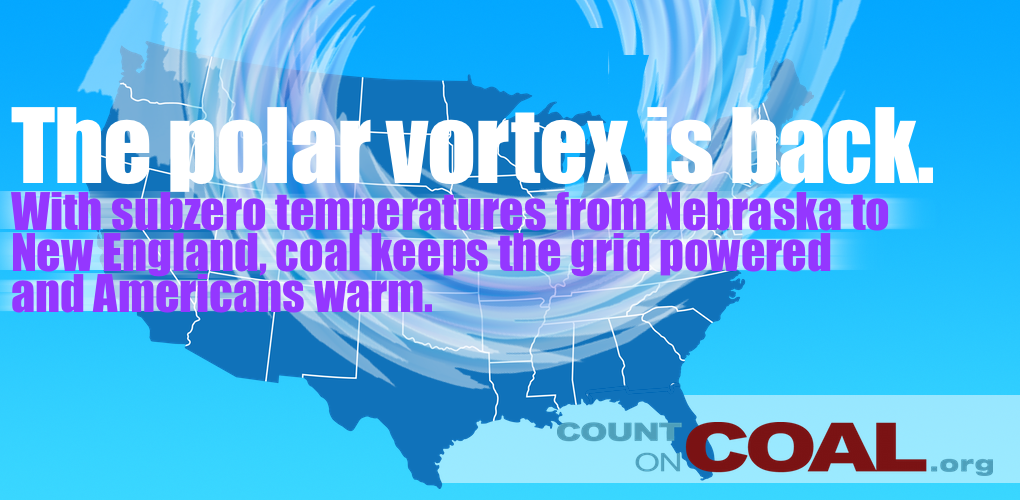
The Vortex Validation
January 3, 2018
What a year it was that just ended. After seeing an election that embarrassed the political “experts”, we enjoyed a booming economy that embarrassed the economic experts.
That gifted student of failure Casey Stengel said it best: “Nobody here knows anything.”
Energy experts found their own platitudes exposed by reality. None is more beloved of journalists and energy experts than the coal-is-dead-or-dying narrative.
The eagerness to write off coal reached a noisy climax when coal’s power market rivals belittled Energy Secretary Perry’s call for a reliability valuation for power plants with on-site fuel storage. The grid is reliable, said coal’s detractors. It doesn’t need FERC’s intervention to spare further closure of coal capacity.
Whomever the gods would embarrass they first allow to speak.
As the last expert tut tutted the secretary, an historic deep freeze grips the Eastern half of the country from Nebraska to New England, giving new credence to Perry’s cautious assessment of the grid’s ability to withstand disruptive events. In the nation’s largest regional grid, coal on the close of the week generated more power (45,842 MW) than natural gas (25,927 MW), nuclear (35,514 MW) or renewables (3,086). PJM coal accounted for almost 40 percent of the grid’s power in one afternoon – almost a third more than the organization’s typical coal share. And colder weather is still to come.
In New England, where coal has been all but banned, households are facing the cold reality of relying on depleted inventories of heating oil and soaring prices for natural gas (a one day jump of 230 percent) as a monster storm approaches. It’s almost an SNL skit.
Attention FERC commissioners: coal shines when temperatures plunge. Consider a counterfactual: what would happen had the Michael Bloomberg-Gina McCarthy-Sierra Club program prevailed to retire the last coal plant? I can see the ads now.
Polar Vortex 2.0 was just the exclamation point to an otherwise good year for coal if not for its detractors. U.S. coal output climbed 6.4% over 2016, thanks to falling coal inventories and rising natural gas prices.
Experts also got LNG growth wrong by understating offshore demand and infrastructure development that turned the US into a net energy exporter in 2017. Switching just 5% of China’s power requirements to LNG adds another Japan-sized market for global LNG imports, says Akin Gump Strauss Hauer & Field LLP. If LNG keeps its foot on domestic gas prices, coal’s more efficient producers will see greater market potential.
Meanwhile, IEA now projects global coal demand to grow through 2022. If you relied on the echo chamber for your energy news last year, you’re excused for being surprised by all this.
- On January 3, 2018
